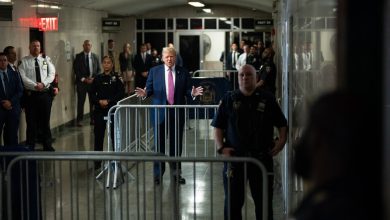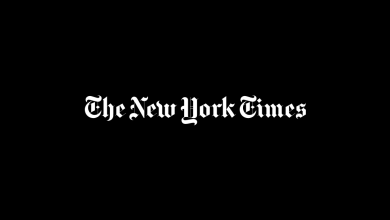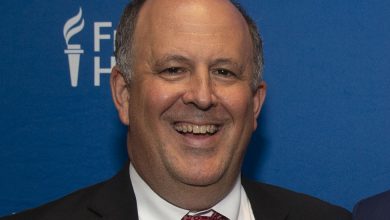Air Travel Is Back. Now the Airlines Have to Keep Up.

Air travel is back. Can the industry keep up?
Airlines are increasingly confident that they’ve reached a turning point in their financial recovery, with healthy profits in their future. But staffing shortages threaten to stifle the rebound and rein in ambitions. The threat is greatest for smaller carriers and third-party vendors, but, in an interconnected industry, no one is isolated from those challenges.
“The whole infrastructure is not set up to snap back to these rapid growth rates,” Scott Kirby, the chief executive of United Airlines, said on a call with investor analysts and reporters on Thursday. Beyond the airlines’ own work forces, that infrastructure requires sufficient numbers of air traffic controllers, security agents and fuel vendors. “All those constraints get in the way of a reliable schedule,” he said.
Mr. Kirby and his counterparts at American Airlines and Delta Air Lines say they are seeing vibrant demand for spring and summer travel. But all three airlines have also said they are taking a measured approach to flight scheduling to avoid the frustrations that have arisen over the past two years as limited glitches cascaded into major disruptions affecting some airline networks for days.
That restraint comes as the industry shakes off first-quarter losses — American’s was $1.6 billion, it said Thursday — and enjoys the beginnings of a spirited comeback. Alaska Airlines, American and Delta each set sales records in March. United says it expects record revenue in the second quarter. And United, American and Delta are all projecting profits in that quarter. Based on that outlook, the carriers’ shares are up 16 to 19 percent since Delta kicked off the latest earnings announcements last week.
“Demand is as strong as we’ve ever seen it,” Robert Isom, American’s chief executive, told analysts and reporters on Thursday.
Meeting that demand may not be easy. The nation’s three largest airlines say they have hired tens of thousands of workers, which they say is enough to manage their resurgent business. But shortages elsewhere threaten to slow the industry’s recovery.
This month, Alaska said it was cutting about 2 percent of flights through June after a pilot training backlog forced a number of last-minute cancellations, echoing action taken throughout the industry after a disastrous start to the year. And smaller carriers that operate regional flights for the nation’s biggest airlines are struggling to replace pilots hired away by those big carriers.
“There are certain industry constraints on growth in the near term, notably related to pilot and aircraft supply,” Mr. Isom said.
American said it had hired 600 of the 2,000 pilots it hopes to bring on board this year. The airline is rapidly training them with the hope of having all of its planes back in use by the end of the year.
In all, American has expanded its work force by 12,000 employees, or 10 percent, since last summer. Delta said last week that it had added about 15,000 workers since the start of last year. United has hired 6,000 this year.
But as of February, none of the major carriers had returned to prepandemic employment levels, according to federal data. Industrywide, airlines employed more than 739,000 part-time or full-time workers in February, down about 2 percent from the same month in 2020. And airlines may struggle to staff up further.
“It’s a competitive market out there,” said Peter McNally, a vice president who oversees research on the industrials, materials and energy industries at Third Bridge, a consulting firm. “The airlines are forced to compete in a broader economy.”
Airlines face other challenges, too, including rising fuel prices.
American expects fuel prices in the second quarter to be about 30 percent higher than in the first, while United and Delta have said prices could rise as much as 20 percent. Last week, the price of jet fuel in North America was 20 percent higher than it was a month earlier and up 141 percent from a year ago, according to the Platts Jet Fuel Price Index.
Despite the challenges, the industry remains broadly optimistic, largely because skyrocketing fares do not seem to have curbed the appetite for travel.
For the second quarter of this year, American expects revenue to be about 6 to 8 percent higher than in the same quarter of 2019 — even though it expects capacity to be down 6 to 8 percent from the 2019 quarter.
Airlines say customers aren’t just willing to pay higher fares — many are also shelling out even more money for premium upgrades like seats with more legroom.
Airlines are particularly optimistic about recent improvements in corporate travel, a lucrative part of the business. Companies had been slow to send employees on work trips throughout the pandemic, but that appears to be changing quickly as office reopen and companies lift such restrictions. The carriers said corporate travel had reached 70 to 80 percent of its 2019 level.
According to a poll of travel professionals conducted this month by the Global Business Travel Association, about 86 percent of companies now allow employees to travel domestically for nonessential business, a 13-percentage-point increase from February. The share of businesses that allow nonessential international travel is up to 74 percent, a 26-point jump from February.
“There’s high levels of optimism and employee willingness to travel for business,” Suzanne Neufang, the association’s chief executive, said in a statement on Thursday.
American said the way people travel had changed, too, perhaps for good. In the past, about 20 to 25 percent of the airline’s trips involved travel combining business and pleasure. That share has increased over the past six months, with about 50 to 55 percent of trips carried out for “blended” reasons, said Vasu Raja, American’s chief commercial officer.
“We’re seeing different sales days becoming big sales days, different travel days becoming big travel days,” he said. “The nature of what we call leisure demand and business demand is changing.”
The industry reached another milestone this week: the end of the federal mask requirement on public transportation. Both American and United said they hadn’t seen any notable change in bookings after dropping mask mandates on Monday, though several recent surveys suggested that passengers generally supported the requirements.
Among adults surveyed over the past weekend, about 56 percent said they supported requiring masks on public transportation, according to a poll by The Associated Press-NORC Center for Public Affairs Research, with 24 percent opposed.
International travel, another profit driver for airlines, has shown promising signs of recovery, too. Consumers are traveling abroad in greater numbers, particularly between Europe and the United States, as travel restrictions are lifted and virus infection rates remain low, airlines said.
American said on Thursday that revenue from international travel had reached about 60 percent of prepandemic levels in March. The airline said it was seeing customers book more travel to South America and across the Atlantic, with many willing to buy premium seats, making up somewhat for a lack of international corporate travel. Travel to Asia continues to lag, though, because of health restrictions. United and Delta reported similar trends.
But there is hope that the international rebound will be swift as countries open back up. Delta’s president, Glen Hauenstein, said last week that the airline expected flights to South Korea to grow to more than 90 percent full by June, up from about 50 percent full in March, after the country loosened travel restrictions this month.
“When countries reopen, we see a rapid restoration of demand,” he said.




